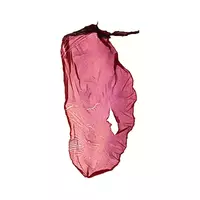Porphyry algae

Porphyry seaweed, also known as red sea salad, refers to red seaweed and often reaches a meter in length, and sometimes even more. Due to substances such as phycoerythrin, chlorophyll and phycocyanin, which are included in its composition, it has just such an interesting pigmentation. In appearance, porphyry algae resembles a wide, thin folded-wavy plate with torn or whole edges. Often you can find plates of porphyry pink-red, brownish or even slightly bluish in color.
Since ancient times, rooted in the earliest settlements of people on the sea coast, these algae have been used as food, as well as as pet food. Some types of seaweed, in addition to salt water, grow not only in fresh waters, but even on land. But porphyry algae lives exclusively in the Mediterranean and Black Seas.
In China and the land of the rising sun, eating porphyra algae is equated with a ritual, where it is practically a cult food, which is used very often. Unfortunately, the population of European countries has not fully tasted the taste of porphyra algae, and therefore the feed use of this seaweed prevails there. By the way, the word porphyra also has a second meaning - the mantle or outerwear of the sovereigns, in which they are dressed in especially solemn occasions.
In gastronomy, this seaweed can act not only as an additive to various spicy seasonings and side dishes, but also as a directly independent food product. Porfira is often eaten raw, adding it to various salads, or boiled with rice, meat or other foods.
In addition to the use in cooking in medicine, the beneficial properties of porphyra algae are also known, since in addition to the increased protein content, it is rich in vitamins A, C, V1, V2, V12 and D. It is quite interesting that porphyra algae is equated with lemon in terms of the amount of ascorbic acid.
porphyry algae 35 kCal
The energy value of porphyry algae (Ratio of proteins, fats, carbohydrates - ju):
Proteins: 5.81 g (~ 23 kCal)
Fats: 0.28 g. (~ 3 kCal)
Carbohydrates: 4.81 g (~ 19 kCal)
Energy ratio (bj | y): 66% | 7% | 55%
 Español
Español Français
Français Português
Português Русский
Русский 简体中文
简体中文 繁體中文
繁體中文 日本語
日本語 한국어
한국어 العربية
العربية Türkçe
Türkçe Қазақ
Қазақ Deutsch
Deutsch Italiano
Italiano Українська
Українська
